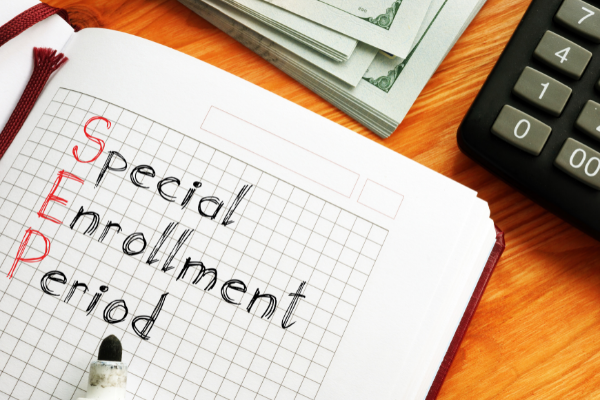A low-income Special Enrollment Period extension is said to benefit millions of people potentially.
At the end of the last Open Enrollment, roughly 1/3 of Marketplace participants had income at or below the 150% federal poverty level (or FPL, which is $19,320 per year for a single person in 2022, $32,940 for a family of 3). As a result, the Centers for Medicare & Medicaid Services (CMS) extended the low-income Special Enrollment Period (SEP) back in March for consumers with household incomes below 150% FPL who aren’t eligible for Medicaid or the Children’s Health Insurance Program.
This SEP is only available on-exchange (meaning plans that are available on the public exchange only) since premium tax credits aren’t available outside the exchange.
To get on-exchange coverage, or if you have questions, contact me at (912) 660-5236 or go online to schedule your no-cost, no-obligation appointment.
Each month, the Marketplace will offer a new special enrollment opportunity, and plan choices will include zero-premium plans with vastly reduced deductibles. To sign up during the year, you can simply attest to having 2022 income at or below 150% FPL, then continue with your application. The Marketplace will conduct real-time income verification, as it does for all applicants, and may ask for additional documentation to be submitted within 90 days.
Low-income Special Enrollment Period
Qualifying consumers can claim the SEP from March 18 to December 31.
November 30 will be the last day to confirm eligibility to enroll in coverage for December 2022.
You have until the end of the month to select a plan for the following month.
Regardless of whether you submit a new application on May 1 or May 16, you have until May 31 to select a plan for coverage that begins on June 1.
No documentation is needed to confirm SEP eligibility.
However, federal officials encourage you to update your application as your income changes. CMS also issued newly redesigned eligibility determination notices to help better convey eligibility information, ease barriers to getting covered, and help you access and use your coverage.
You have to be eligible for premium tax credits to take advantage of this SEP.
So regardless of income, the SEP is not available to a person who is eligible for Medicaid, premium-free Medicare Part A, or an employer-sponsored health plan that provides minimum value and is considered affordable. The SEP is also not available to people in the coverage gap (which exists in 11 states as of 2022) because they are not eligible for premium tax credits.
The low-income special enrollment period may or may not be permanent.
While the new special enrollment period is considered permanent, eligibility is tied to the increased subsidies made available through the American Rescue Plan Act to help people buy coverage, which expire at the end of 2022 unless Congress extends them.
Although access to this SEP is largely based on income, there are several points to keep in mind:
- In most states, there is a fairly narrow income window for eligibility for this SEP since Medicaid is available to adults in most of the country with income up to 138% of the poverty level. So this SEP would only be available to applicants with income above 138% of the poverty level but not more than 150% of the poverty level (note that Medicaid enrollment, for both adults and children, is always available year-round).
- In the dozen states where Medicaid has not been expanded, this SEP is available to households with income between 100% and 150% of the poverty level. (There’s a coverage gap in those states for many adults with income below the poverty level, and this SEP does not change that.)
- Recent immigrants (who aren’t eligible for Medicaid due to their new immigrant status) can qualify for this SEP with income between 0% and 150% of the poverty level.
- People receiving unemployment compensation may be able to qualify for this SEP in 2022 and future years if additional legislation is enacted. In 2021, income was determined to be 133% of the federal poverty level for people receiving unemployment compensation, regardless of how much it actually was. The Build Back Better Act called for this to be extended through 2022, with income above 150% of FPL disregarded for people receiving unemployment compensation. This would continue to allow these applicants to be eligible for this SEP, as eligibility is based on having an income of no more than 150% of the poverty level. But as of early 2022, the Build Back Better Act has stalled, and its future is uncertain. Some aspects of it may be enacted piecemeal or as part of other legislation.
Learn More About Your Coverage Options
Open Enrollment remains the best time to sign up for year-long coverage. Still, the added enrollment opportunities will make it easier for you to sign up for premium-free plans with low cost-sharing throughout the year.
To claim this SEP or learn more about your coverage options, contact me today!


